Is aero important when riding gravel?
While seeking aerodynamic improvement is regarded as conventional wisdom on the road, should the same apply to gravel racing?
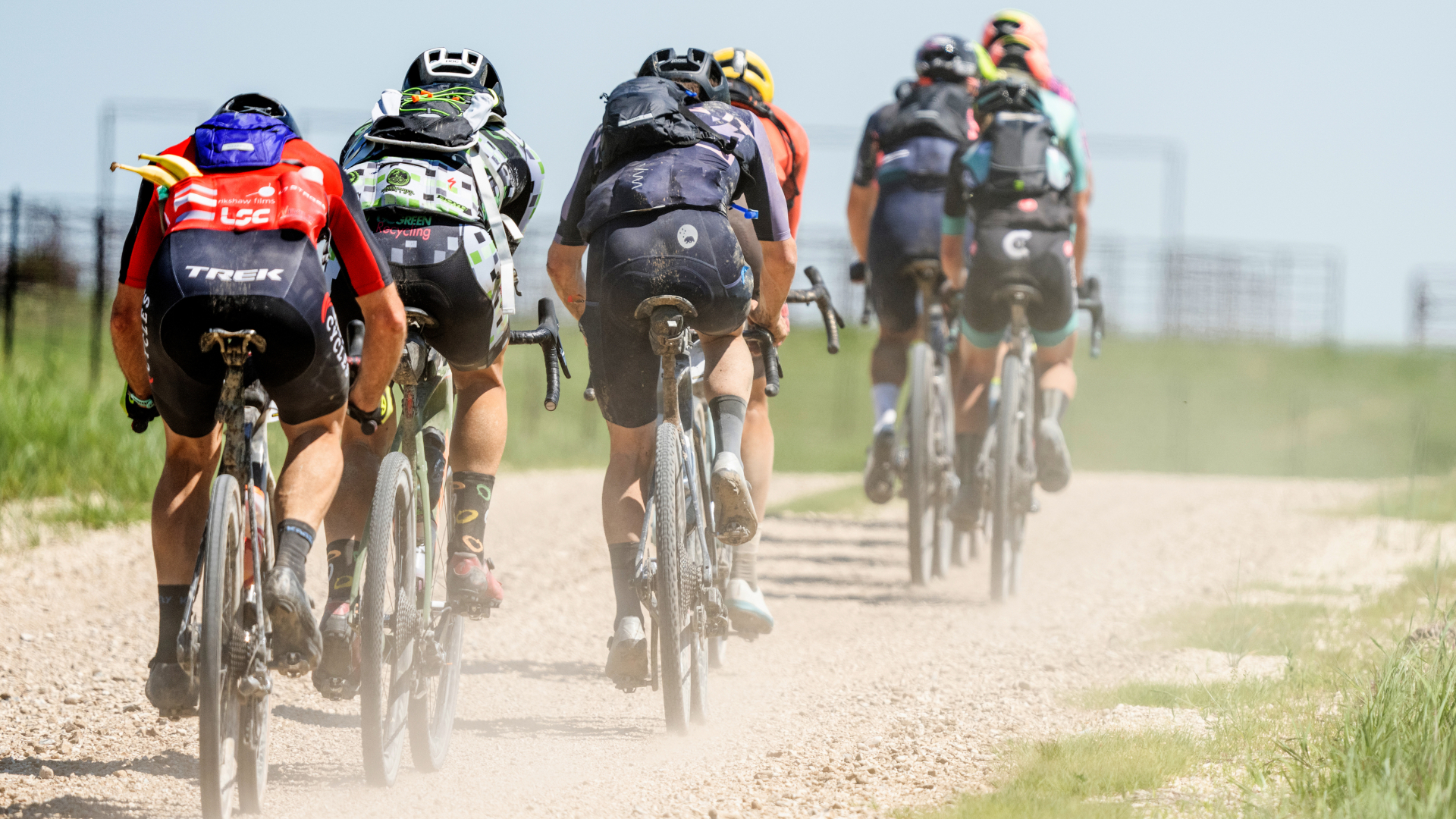

When it comes to road cycling, aerodynamic efficiency has been the main frontier of development in bikes, helmets, wheels, and kit for the last decade. With gravel riding hitting the big time in the last few years, the aero revolution has found its way into the gravel sector.
Wheel brands Zipp, Hunt, and Parcours have all brought out gravel-specific aero wheels with the goal of saving minutes over the duration of events such as the Unbound 200, which is 200 miles long. Kit companies have also come out with gravel-specific jerseys and skinsuits looking to do the same.
But with slower riding and racing speeds in the gravel sphere, do aerodynamics really make a tangible difference in the mixed-surface scene?
What are the brands claiming?
First up, Parcours, which has released a brand new wheelset, the 47mm deep FKT.
This wheelset has been designed specifically around the use of 40-45mm tyres with the rim, and at the racing speeds of high-level gravel racers, around 35kph. The FKT wheels have been designed with the Panaracer Gravelking X1 tyre so that the tyre shape and tread and rim profile complement each other to improve aerodynamics. Parcours state that this new wheelset is as fast compared to the previous gravel wheelset, as a rear disc wheel is to a shallow section climbing wheel.
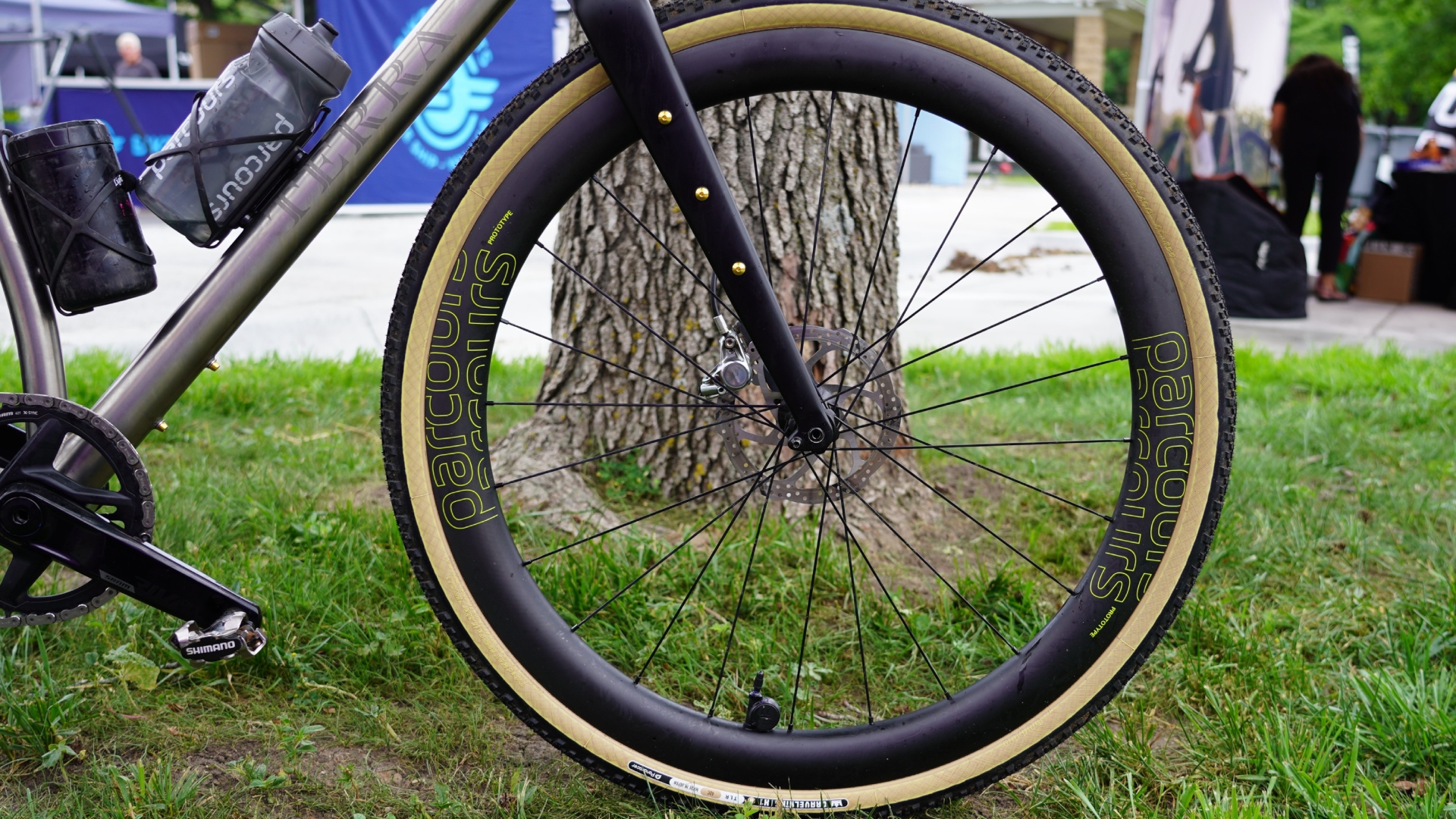
The FKT wheels in action with Panaracer's Gravel King X1 tyres
Zipp has also released its very own gravel specific aero wheelset which is 50mm deep and designed around the racing speeds of 32kph. Both Zipp and Parcours believe that even with the increase in rim depth and associated weight penalty, the increase in aerodynamic efficiency is well worth it.
Additionally, when we look at clothing, both aero socks and other aero clothing can save a handful of watts at speeds around 30kph. This is why the likes of Rapha, Castelli, and Rule 28 have all come out with gravel specific aero garments to balance aerodynamics and practicalities.
The data behind the claims
Parcours has been very open with the data it has released alongside the FKT wheelset.
When compared to other aero wheelsets with the same tyre, Parcours claim the FKT saves 6-6.2w at 35.5kph and 15-15.6w at 48kph - according to the brand's wind tunnel testing
Admittedly 48kph is a fast speed on the road let alone gravel, so it is not the most relevant piece of data for the everyday rider. A saving of similar magnitude was seen between the FKT wheelset with Panaracer Gravelking X1 and different tyres on the same rim, showing the importance of a tyre working with the rim when it comes to aerodynamics. This is said to equate to a saving of 6min 17sec over the course of the 2024 Unbound 200 mile race, or the difference from 1st to 4th in this year's race.
Speaking to Cycling Weekly, Parcours founder Dov Tate argued that aerodynamic savings were still tangible at 25kph, a speed much more applicable for the majority of us over shorter distances and less extreme terrains. At this pace, he says, the Parcours FKT wheel would still save 3.7w over a box section shallow alloy wheel. When paired with the GravelKing X1 40mm tyre, this saving increases to 5.8w - that's compared with a slower 40mm tyre.
Since slower riders are simply on the course for longer, smaller watt savings make for proportionately larger time savings and speed increases at lower speeds. That 5.8w saving over a 107km gravel ride at 25kph would result in a speed increase of 0.4kmph or a time saving of 4min 35sec when you run the numbers through MyWindSock.
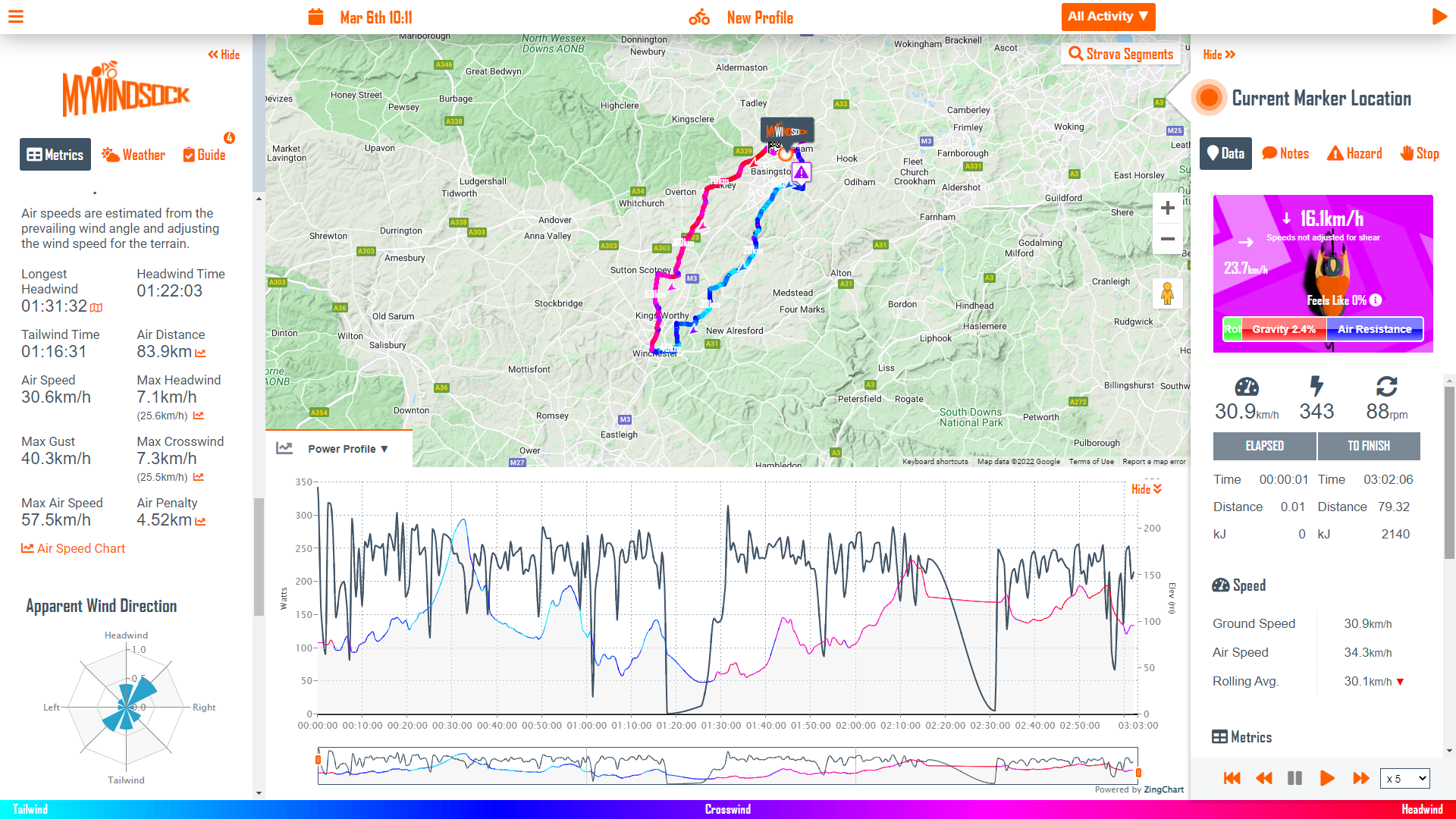
My windsock is a free to use piece of software that allows users to model rides based on current wind conditions, inputting parameters such as power, weight, and CdA. It is often used by WorldTour teams in time trials and road races for predicting times.
Zipp also claims a saving of between 1-4 watts at speeds of around 32kph for its new wheelset, which sounds very modest. However, when you look at the time saving over 200km using 240w with a system weight of 85kg and coefficient of drag of 0.335, a 2w saving saves 99 seconds in total using MyWindSock to calculate.
Data from Rule 28 around its aero socks shows that these can save around 1.5w at 32kph. Rule 28 also has a new cargo base layer, which has been designed to have a bottle at the front of the base layer and create a type of fairing. The claim here is a saving of 5w at 32kph. Over the course of a 200 mile gravel event at 32kph this would equate to a saving of around 6 minutes.
This wattage savings sounds small, but looking at the claims and the savings, it adds up to something significant, especially over the course of a 6-hour long event.
The pro perspective
One of the downsides to some of these aero products is that they can add weight gain to an overall setup. However, pro rider Dylan Johnson isn't put off by this.
“Most gravel races in the US are on rolling terrain with relatively high average speeds [over 32kph] meaning that aero far outweighs weight in terms of time saved,” explained Johnson.
“Obviously this depends on the course, but modest weight savings could be seconds to a couple minutes faster for most courses while modest aero savings could be tens of minutes.
A post shared by Dylan Johnson (@dylanjawnson)
A photo posted by on
Wider tyres can come with an aero penalty, but Johnson will still opt for chunkier rubber.
“[I'd only opt for 40 or 45mm tyres] for the smoothest of courses," he said. “I ran 2.2” mountain bike tyres at Unbound and many other gravel races this year and my prediction is that mountain bike size tyres will be standard for gravel racing in 5 years.”
So was this a case of comfort?
“No," said Johnson, "Mtb tyres are faster for most gravel courses. I’ve tested it and others are coming to the same conclusion after testing as well. This is partially because lightweight mtb tyres can use a thinner casing than most gravel tyres without increasing the puncture risk because the volume of the tire is so much higher. A thinner casing generally means less rolling resistance. In both road and Mtb racing tyres have continued to get wider. Gravel is a relatively new discipline of cycling and we’ll likely see the same thing happen.”
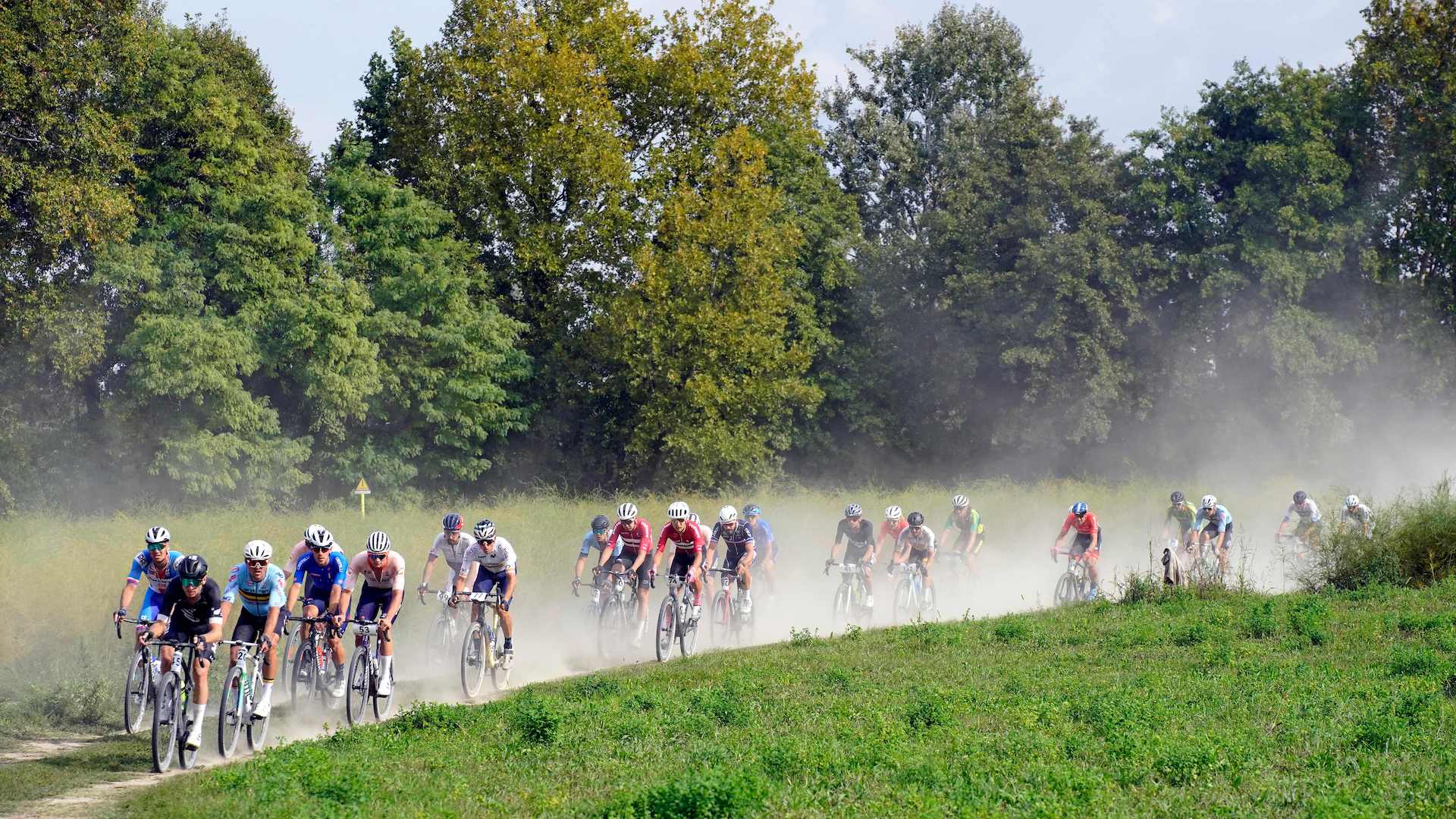
Last year's Gravel World Championships was a fast and furious affair on a rolling course.
So what is really more important - aero, or lightweight? No hesitation here.
“Aero, simply because it makes a bigger difference,” he said. “We have tested deep wheels with wide tyres in the wind tunnel and they do make a difference, which may come as a surprise to some."
However, as with road racing, the rider itself remains the biggest factor when considering aerodynamics.
"Your body will always create the majority of your aero drag so aero clothing is super important," Johnson says. "At Unbound this year I wore Rule 28’s new gravel suit which takes their road race skin suit and adds a sleeve for a hydration bladder on the back. We already found that adding a hydration pack to my body was more aero and this takes that idea and improves on it both in terms of comfort/heat management and aerodynamics.”
How does this apply to the rest of us?
Theoretical savings and improvements are all well and good, but as with a lot of these claims they are being applied to professional riders by marketing teams.
'Gravel' also has a different meaning depending upon who you ask, typically those riding US terrain will be enjoying wider tracks with less mud, whilst those in the UK may be traversing something more like a mountain bike trail; speeds will be adjusted accordingly.
At 30kph, the aerodynamic savings are a lot smaller than the potential gains to be found when traveling at 40kph. This is because as speed increases, so does the air resistance that we have to overcome. The problem is that the resistance increases at a higher proportional rate than the speed, so the power required to overcome it increases at a cubic rate compared to the speed.
So, the faster you go, the more aerodynamics matters. But for most amateurs, travelling 30kph average for a long gravel event is unlikely. At this level 20-25kph is far more common even over a flatter event. A hilly course would see the speed decrease yet further.
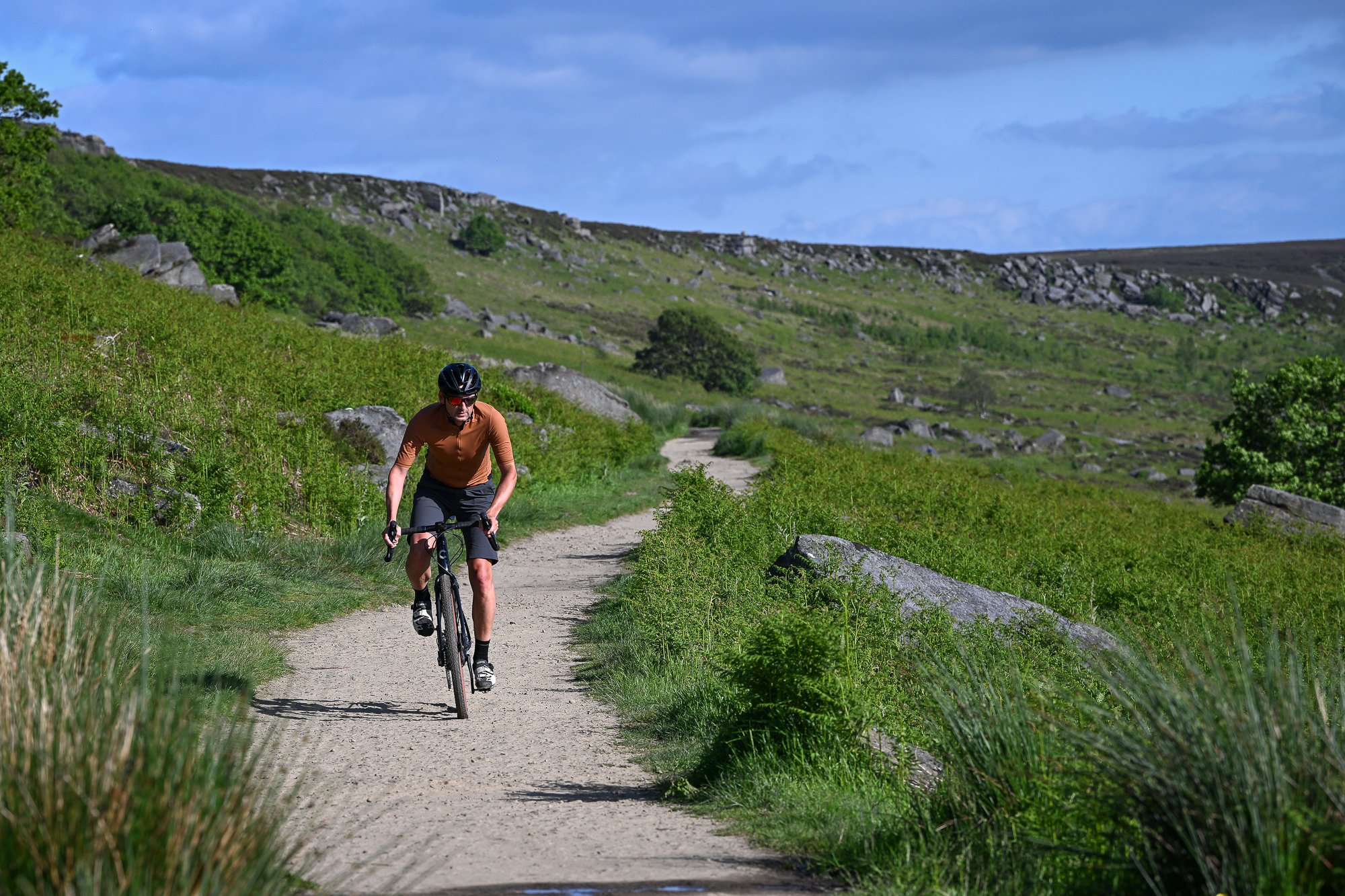
Aerodynamics gains are also difficult to extrapolate to lower speeds. Although we know the drag increases at a cubic rate, the way a wheel rim interacts with the air changes the proportional watt savings. For example, Wheel A and Wheel B may perform exactly the same at 40kph, but wheel A is comparatively faster at 45kph and Wheel B faster at 35kph. We can’t just say that a 4w saving at 30kph equates to a 1w saving at 20kph compared to a different wheel. This is where more relevant consumer testing and data is required.
The other consideration is the weight of the wheel. For gravel events, the way they are raced is generally more consistent in pacing than road races so there is less in the way of braking and accelerations. In these scenarios, a heavier aero wheelset will often be faster even over most climbs.
However, when speed reduces, so too does the wheel inertia. This is important to consider as a heavier wheel can hold its speed better at higher speeds due to its own inertia keeping it rolling. This also makes it harder to get the wheel up to speed at lower inertia, and on steep climbs at low speeds, this can be particularly noticeable and hard to accelerate. So that weight penalty may be worth it for faster riders, but for riders traveling at lower speeds and tackling steeper inclines, it may be more of a hindrance.
There are some benefits however that can help us as much as the pros. For longer events like the Unbound 200, us mere mortals will take longer to complete them. This means we need more fluids and fuelling, so new aero gravel attire with inbuilt storage holds some big benefits. Whereas a hydration pack can cause irritation when riding, a hydration bladder fitted into a skinsuit will be both more secure and more comfortable. While a cargo base layer with a bottle or ice at the front is also highly practical.
As for the deep section wheels, enhanced stability in deeper mud or through water can be very helpful, for staying upright and also reducing the fatigue on the upper body.

Thank you for reading 20 articles this month* Join now for unlimited access
Enjoy your first month for just £1 / $1 / €1
*Read 5 free articles per month without a subscription

Join now for unlimited access
Try first month for just £1 / $1 / €1
Get The Leadout Newsletter
The latest race content, interviews, features, reviews and expert buying guides, direct to your inbox!
Andy is a Sport & Exercise Scientist, fully qualified and experienced Cycling Coach, Sports Director, Freelance Writer, and Performance Consultant. He spent 3 years riding for a UCI cycling team and 7 years as a BC Elite rider, competing in prestigious events such as the Tour of Britain and the Volta a Portugal.
Graduating with a first-class honours degree in Sport & Exercise Sciences, he continues to pursue his interest in research in the field of Sport Science alongside managing his coaching business, ATP Performance. He also works as a Wind Tunnel operator and Performance Consultant at the Silverstone Sports Engineering Hub, working with individuals, teams, and businesses to optimise performance and develop products.
-
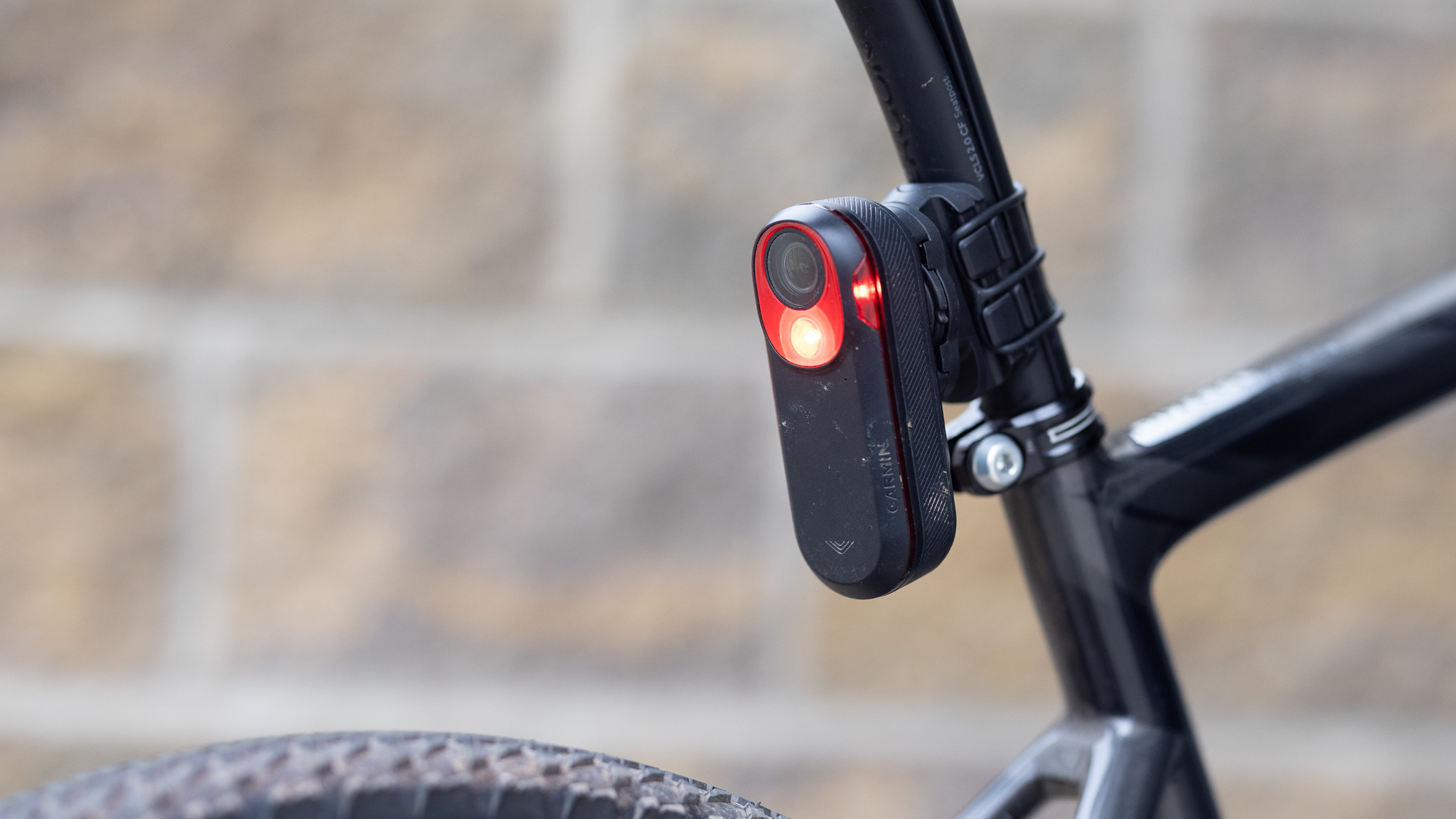 Day or night, I never ride without my Garmin Varia rearview radar light; it's one of the best pieces of cycling tech I've ever owned
Day or night, I never ride without my Garmin Varia rearview radar light; it's one of the best pieces of cycling tech I've ever ownedDeals The Varia RCT715 is, for me, an essential piece of riding kit delivering enhanced safety, and right now, it has a superb $100 off at REI
By Paul Brett
-
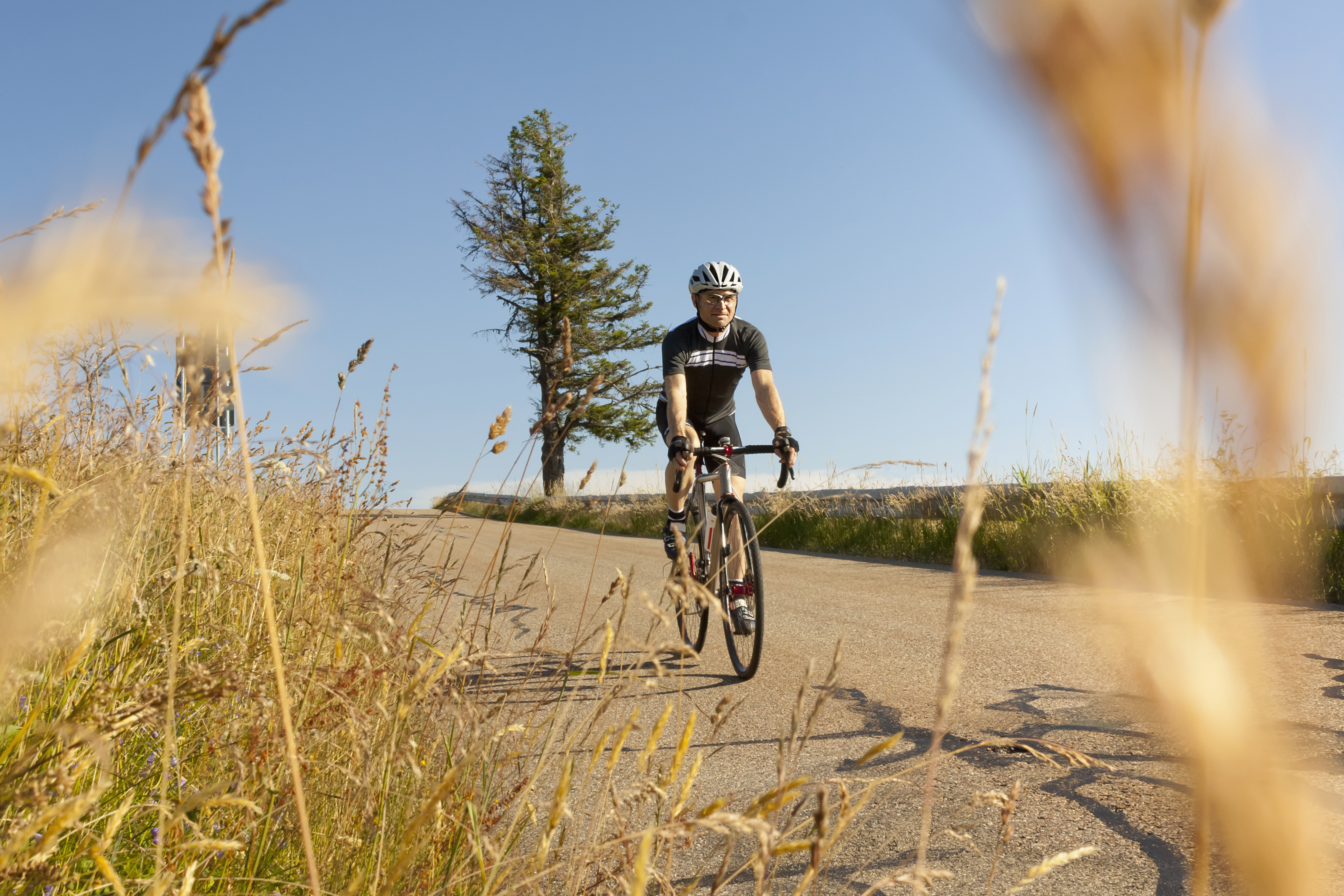 Hayfever and your riding: how to combat it as the pollen strikes
Hayfever and your riding: how to combat it as the pollen strikesExplanations, medications and holistic measures to make your spring and summer riding more enjoyable
By James Shrubsall